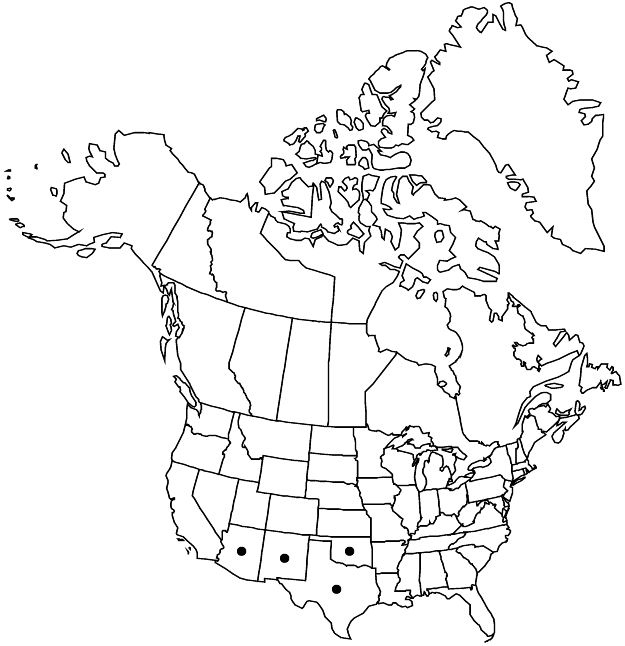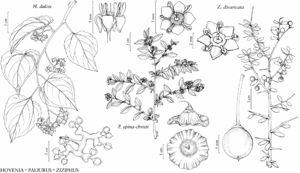Ziziphus obtusifolia
Gen. Amer. Bor. 2: 170. 1849.
Shrubs, 0.5–1(–2.5) m; secondary branches gray-green to white, pruinose, usually glabrous, sometimes sparsely pilose, thorn-tipped, axillary thorns solitary, with 0–1 nodes, 2–10 mm; stipular spines absent. Leaves deciduous, alternate, sometimes fascicled; blade gray-green, glaucous abaxially, dull green adaxially, ovate, oblong, or elliptic to nearly linear, (0.5–)1–2.5(–5) cm, subcoriaceous, base rounded to truncate, margins entire or wider leaves distally toothed, apex rounded to slightly retuse, surfaces usually glabrous, abaxial sometimes sparsely short-villous to short-strigose; 1-veined from base. Inflorescences usually pedunculate thyrses, rarely flowers solitary, 5–10 mm, (1–)2–6-flowered, peduncles (0.5–)1–2 mm, nearly equaling or shorter than pedicels. Flowers: hypanthium yellow to orangish or slightly purple, moderately to densely strigose, hairs loose, curved; sepals yellow to orangish or slightly purple; petals yellow to pale yellow or nearly white. Drupes dark blue to blue-black or purplish, globose to slightly elongate, 5–10 mm.
Phenology: Flowering (Mar–)Apr–Jun.
Habitat: Silty and sandy floodplains and washes, stream banks, gravelly slopes, brushy hills, sand and clay dunes, plains, gypsum outcrops and roadsides, desert grasslands, scrublands.
Elevation: (10–)100–1600(–1800) m.
Distribution

Ariz., N.Mex., Okla., Tex., Mexico (Chihuahua, Coahuila, Nuevo León, San Luis Potosí, Sonora, Tamaulipas, Veracruz, Zacatecas).
Discussion
In Arizona, Ziziphus obtusifolia occurs only on gypsum substrates in the southeastern corner of Cochise County.
Selected References
None.
